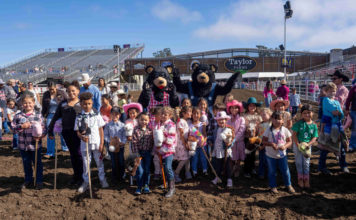LOCKWOOD — San Antonio Union School District had several areas of positive direction during the 2019-20 school year, according to its 2020 State of the District published in January.
The Lockwood school district reported a reduction in suspension rates and chronic absenteeism and gains in performance for math and English, and also saw the first increase in student population for the first time in several years.
Superintendent Josh Van Norman said the Lockwood school had once been rated with the eighth-highest suspension rate in the state as little as two years ago.
“That’s not a list you want to be on,” Norman said, noting that children who get suspended are typically boys. “They’re kids you need to have in the classroom the most,” he added. “They’re acting out for some reason and they’re trying to communicate.”
The solution enacted in the past years has been a system of Positive Behavioral Interventions and Supports, and training for faculty began in 2019.
“Through classroom observation, modeling of expected behavior and frequent check-ins, management practices and student behavior improved,” the report said. “Dedicated staff, consistent verbiage and a cohesive approach to discipline has led to this turnaround.
During the 2017-18 school year, San Antonio had a suspension rate of 13.8%, almost four times greater than the state average of 3.5%. In 2019-20, the school’s suspension rate reduced to 2.9%.
“Awareness was No. 1,” Norman said. “Understanding behaviors, understanding that our goal is to keep kids in classrooms as much as we can. Ultimately, we want kids learning. If they can learn, we’re doing our job.”
According to Norman, building relationships was the most successful strategy in turning around the suspension rates.
“If a child was acting up, they might have just been sent out to the office and some of those things get escalated,” he said of the past. “If a child is just having a bad day or there was a misunderstanding on the playground, that can be escalated if they’re sent away.”
With conversation and building a relationship and rapport, youth feel they can open up about what’s troubling them, Norman said.
“We also have expectations now that are school-wide,” he added.
All around campus, the Wildcats are asked to remember ROAR, which stands for Respect, On Task, Accountable and Responsible.
Enrollment had been in a multi-year decline, with the low point being 120 students in 2018-19, but the latest year increased to 136.
“We have the military base as our feeder system and families come in and out every couple years,” Norman said about the way the school’s enrollment can be changed.
Absenteeism has been on the decline, having gone from 23.1% in 2017-18 to 12.1% in 2019-20. The state average during that time fluctuated between 9% and 10%.
Covid-19 resulted in distance learning, but many students have returned to in-person instruction.
“We actually have our TK through fifth grade students back in person and we noticed an increase since we’ve been back in November in attendance,” Norman said. “Our attendance for the elementary kiddos has been really good. We’re still working on middle school. Overall as a school we’re about where we were at last year. We’d love to have all the kids back.”
Norman explained the welcoming environment is key to getting students to want to go to school. Not only has the school worked with students, but their families as well. Norman said he has regularly hosted a forum where people could ask him anything.
“Creating that platform where parents felt heard helped, especially being new and getting that relationship going,” Norman said.
The attendance problem was related to the suspension rates, in that the school wants as many students present in the classroom as possible.
“We wanted our kids to be at school because showing up is half the battle,” Norman said. “If our kids are at school we know they’re going to learn.”
Norman spoke of the 2017-18 school year’s rate of 23% chronic absences.
“To be chronically absent, you’re missing more than 10% of school days, that’s 18 days,” he said. “When you have almost a quarter of population missing 18 school days, you’re going to have gaps in learning.”
After getting the youth to school and getting them excited to be in the classroom, Norman said the uptick in math and English performance was a result of new training, new curriculum and intervention for struggling students.
In 2018-19, less than 19% of San Antonio students were meeting or exceeding math standards. In 2019-20, that went up to 23%. By comparison, the state average is 40%.
English performance also saw a dip in 2018-19, with more than 30% of students proficient in the subject. By 2019-20, that had risen to 46.8%, but was still lower than the state average of 51.1%.
“The first thing we do is identify each child’s instructional level with a benchmark assessment system,” Norman said.
There, the school gets each child’s reading level so they can be assigned booklets they can understand. Students who need extra assistance work with an intervention teacher, who gets them up to grade level and works on comprehension skills.
“It’s tough to see improvement, but year-over-year, all the work we’re doing is making a difference,” Norman said.















